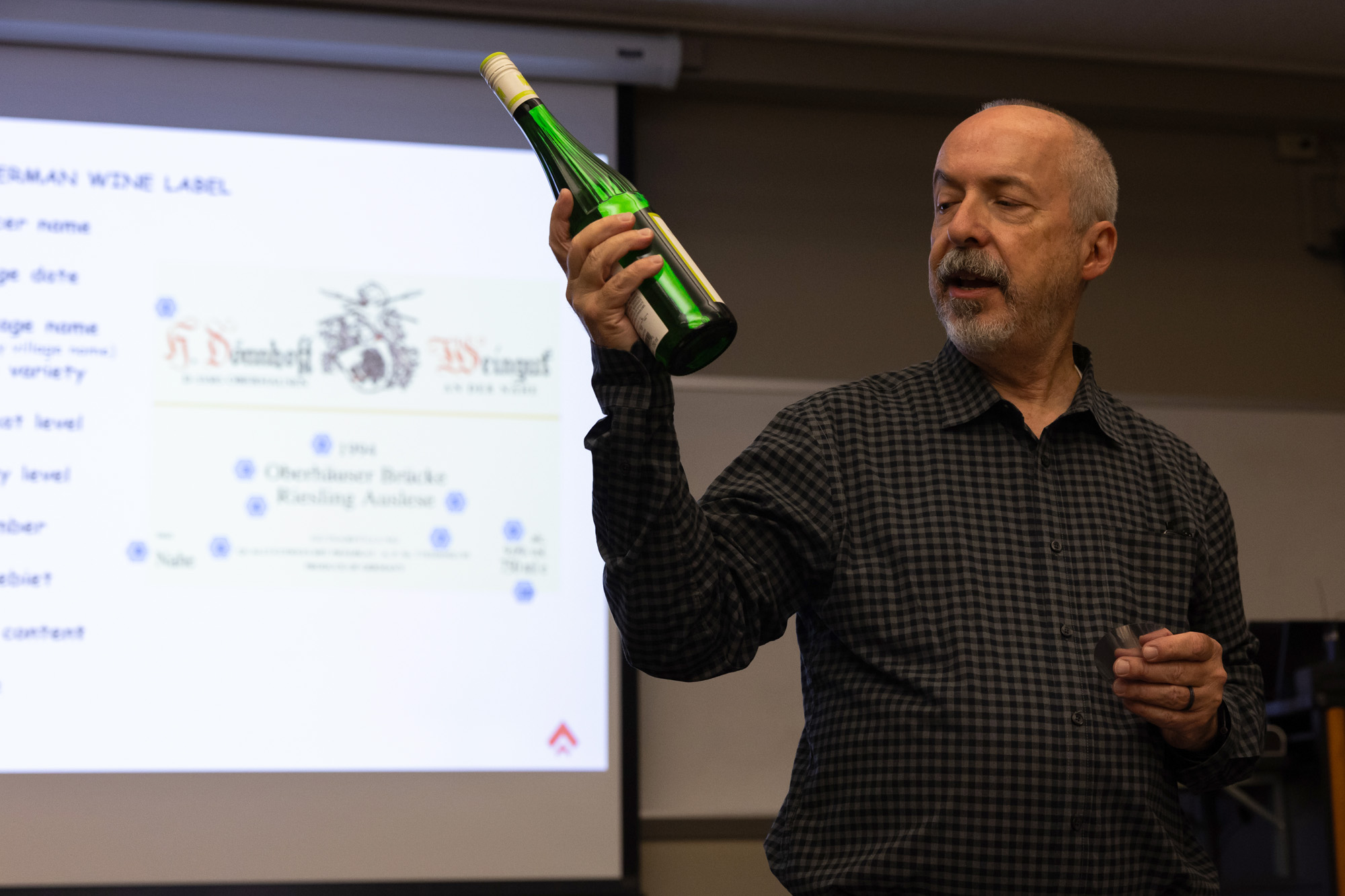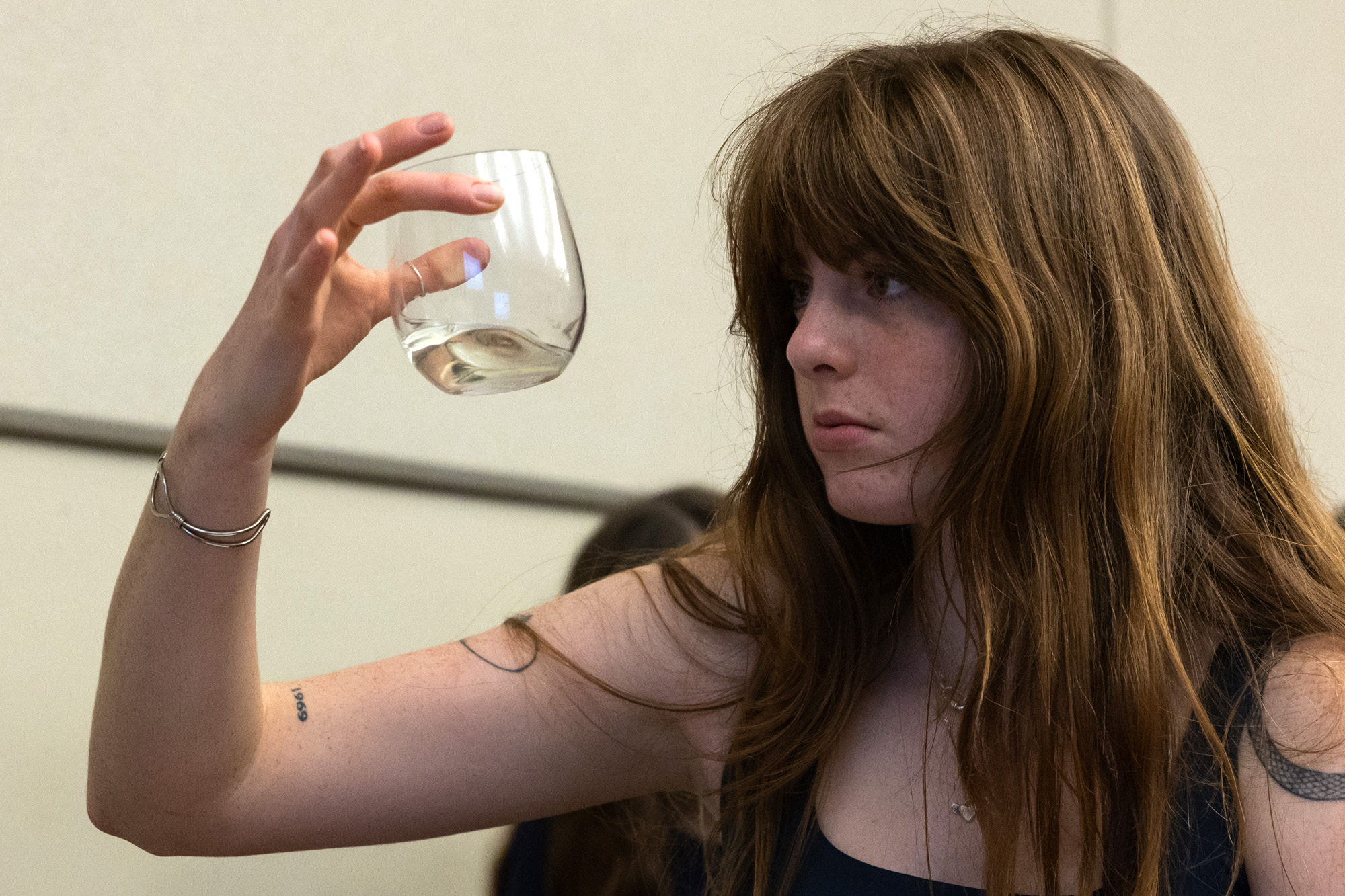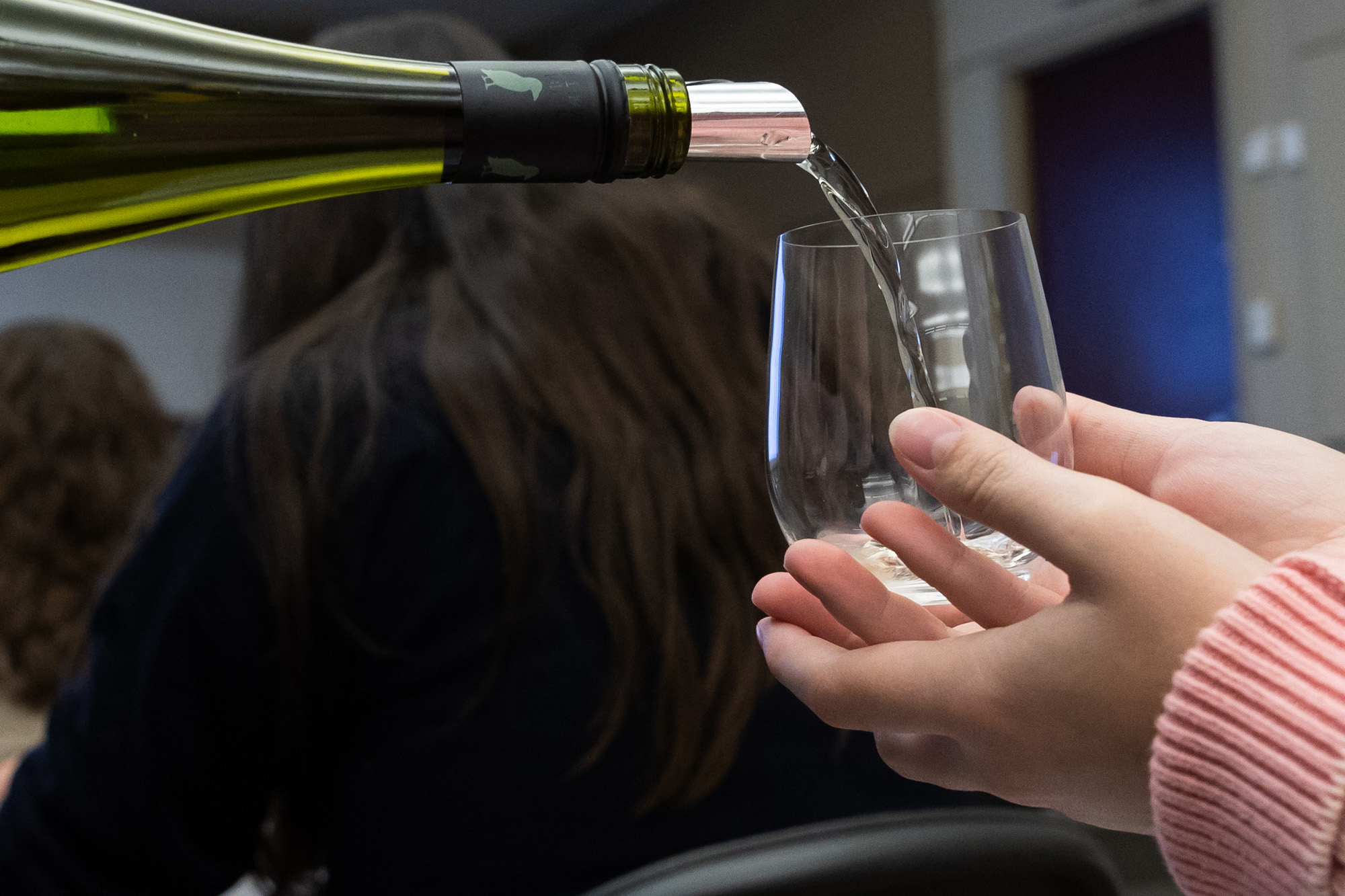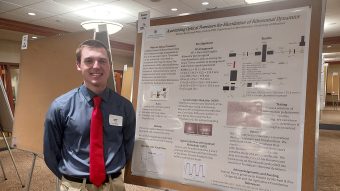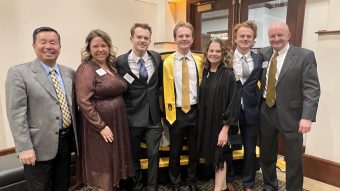Nov. 13, 2024
Contact: Janese Heavin, heavinj@missouri.edu
Photos by Sophia Scheller
In a full classroom at the University of Missouri, students lift stemless tumblers to their noses, breathing in the aroma of a sweet German wine.
“Floral,” one student says when asked to describe the scent. “Honeysuckle,“ another adds. “Apples and pears dipped in honey.”
Welcome to Katherine Hagely’s Grapes and Wines of the World course, where the history, science and art of wine are poured into every lesson.
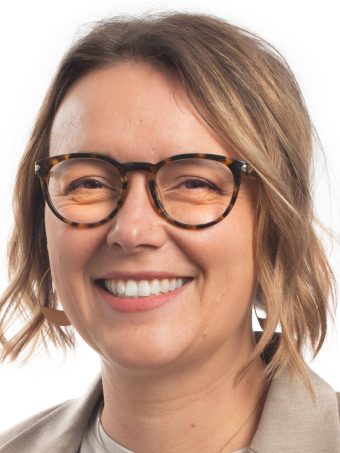
The class is part tasting, part cultural journey and part practical training as students explore the wine industry and gain skills they can use at future business dinners, receptions, exhibits and black-tie affairs.
“It’s one of those subjects that will be applicable if you end up in hospitality, business, journalism, art, music — really a lot of different fields where social gatherings are common,” said Hagely, an assistant teaching professor in Mizzou’s College of Agriculture, Food and Natural Resources. “Students who have taken this class are able to go into professional and formal situations with knowledge and confidence.”
Beyond the bottle
Grapes and Wines of the World attracts around 100 students from all majors every semester. Senior Ella Redford, a plant science major, is enrolled this semester.
“I appreciate the plant sciences aspect of the class — it’s interesting to learn how different climates and conditions affect the flavor,” she said. “It’s also been a great opportunity to learn about and try so many different types of wines that I wouldn’t have had the ability to sample otherwise.”
Because of the nature of grapes and wine, the class provides opportunities to teach students about agriculture, history, geography and science.
“The students come from all backgrounds, including those who have had little or no science coursework, and that makes it challenging but fun,” said Hagely, who has been teaching viticulture for about a decade. “Students are interested in wine but also learn science along the way.”
For historical, geographical and economic context, Hagely brings in Mike Ward — a certified sommelier, certified wine educator and certified specialist of spirits from St. Louis. He shares maps of the world’s top-producing wine regions, explaining why certain grapes are grown in specific areas; talks through the details of harvesting, such as why some grapes are picked earlier than others; and helps demystify wine labels and jargon.
“We show that wine isn’t scary or pretentious,” Hagely said.
While Missouri isn’t among the primary regions explored, Hagely makes a point to recognize the state’s contributions to the industry. After all, the Show Me State is credited with saving the wine industry by developing and sharing a heartier vine after a blight wiped out vineyards in Europe in the 1860s.
“The state can’t grow certain types of grapes, but Missouri vineyards have focused on what they can grow, mainly hybrids, and they’ve done so successfully,” Hagely said. “Wine is an important part of Missouri tourism.”
For Redford and her classmates, each class brings new discoveries.
“I highly recommend taking this class,” Redford said. “It’s a special course not offered at a lot of universities. I would encourage others to really be engaged and think about the content, and if you do, you’ll get a lot out of it.”
